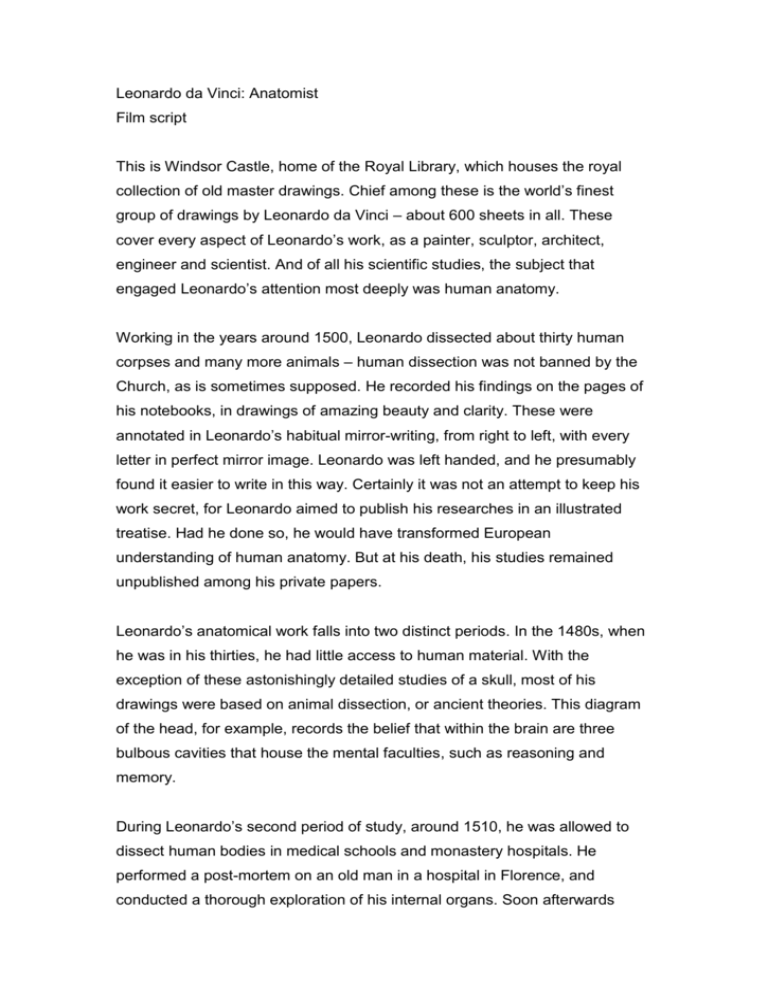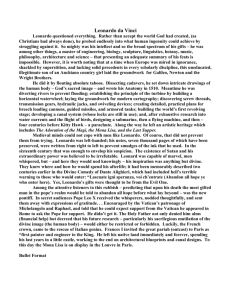Film transcript - Royal Collection Trust
advertisement

Leonardo da Vinci: Anatomist Film script This is Windsor Castle, home of the Royal Library, which houses the royal collection of old master drawings. Chief among these is the world’s finest group of drawings by Leonardo da Vinci – about 600 sheets in all. These cover every aspect of Leonardo’s work, as a painter, sculptor, architect, engineer and scientist. And of all his scientific studies, the subject that engaged Leonardo’s attention most deeply was human anatomy. Working in the years around 1500, Leonardo dissected about thirty human corpses and many more animals – human dissection was not banned by the Church, as is sometimes supposed. He recorded his findings on the pages of his notebooks, in drawings of amazing beauty and clarity. These were annotated in Leonardo’s habitual mirror-writing, from right to left, with every letter in perfect mirror image. Leonardo was left handed, and he presumably found it easier to write in this way. Certainly it was not an attempt to keep his work secret, for Leonardo aimed to publish his researches in an illustrated treatise. Had he done so, he would have transformed European understanding of human anatomy. But at his death, his studies remained unpublished among his private papers. Leonardo’s anatomical work falls into two distinct periods. In the 1480s, when he was in his thirties, he had little access to human material. With the exception of these astonishingly detailed studies of a skull, most of his drawings were based on animal dissection, or ancient theories. This diagram of the head, for example, records the belief that within the brain are three bulbous cavities that house the mental faculties, such as reasoning and memory. During Leonardo’s second period of study, around 1510, he was allowed to dissect human bodies in medical schools and monastery hospitals. He performed a post-mortem on an old man in a hospital in Florence, and conducted a thorough exploration of his internal organs. Soon afterwards Leonardo was working in collaboration with the professor of anatomy at the University of Pavia, and dissected many corpses to make a comprehensive survey of the bones and muscles. In sheet after sheet Leonardo drew structures that were not to be described again for centuries. But Leonardo’s perfectionism and simple bad luck meant that he never completed his studies. After his death all his anatomical papers were bound together in this album, which entered the Royal Collection in the seventeenth century; and they were finally published and understood only in the twentieth century. This is the largest ever exhibition of Leonardo’s anatomical work. We hope you enjoy following the researches of one of the greatest scientists in history.








